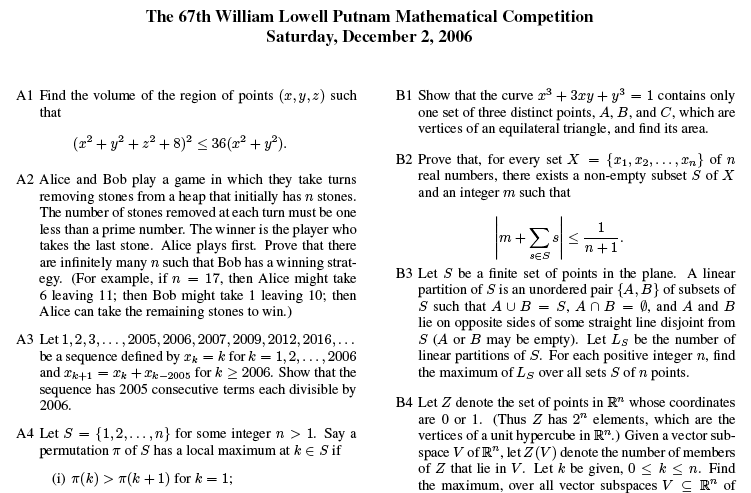Marvin Minsky
 Last night, I went to see Marvin Minsky talk in the Media Lab auditorium, specifically about his contributions to Stanley Kubrick‘s 2001: A Space Odyssey, on his new book (The Emotion Machine), and all sorts of other things.
Last night, I went to see Marvin Minsky talk in the Media Lab auditorium, specifically about his contributions to Stanley Kubrick‘s 2001: A Space Odyssey, on his new book (The Emotion Machine), and all sorts of other things.
Highlights from the talk (with minimal paraphrasing, hopefully):
- “I’ll give a better talk if the computer breaks, because I have an outline here… and… It’s very hard to follow an outline if you get a new idea.”
- “I like to make lists of disasters.”
- “[Kubrick] tried to get me to play chess but I wouldn’t.”
- [on NASA] “… and now they’re thinking of sending people to Mars which is crazy because they’ll be DEAD.”
- Minsky referring to his laser pointer as “the death ray”
- “[The estimate came from] me thinking of the 20-30 ways to estimate the number [of simple statements a 10- or 15-year-old child knows], and then diddling it until they all came out the same.”
- “But you know that most people have 4 or 5 emotions, like hunger and fear, and uh… whatever.”
- Marvin Minsky loves LISP.
- He uses a Mac and did his presentation by scrolling through many pages of a PDF.
- In response to this question: “If AI becomes as good as you’re describing… how should we treat these new machines ethically? Should we treat them like humans?”
Minsky: “If it was as smart as a person, it would very soon become much smarter, so you could ask it!”
If you’re interested in the movie stuff in particular, here’s a pretty good interview with Marvin Minsky, on working briefly with Kubrick.
If you want to get an idea of how Minsky talks about his ideas, here’s a nice transcript of a presentation Minsky made at the Game Developers Conference in 2001.
In school when they teach you about thinking or learning…and what’s school for? It’s not to learn about Inuit culture or Egyptian culture or algebra or geography or whatever? What you’re really in school for is to learn about thinking and learning.
Here is Marvin Minsky’s Wikipedia entry, notable to me at this moment because it has an active notation by Marvin himself in the “Trivia” section.
Neuron stains
I just got back from a neat lab for my hearing class, in which we got a tour of how to create 3-D models of neurons, see tonotopy in the cortex (with Fos labeling of cells stimulated at particular frequencies), and different types of stains of neurons in the cochlear nucleus.
Joe C. Adams showed us slides demonstrating the various neuron stains in a teaching microscope that had four extra eyepieces connected to it so that all five of us could look at the slides at the same time.
These pictures don’t do the staining justice. The Protargol (reduced silver) stains, which highlight nerve fibers, were so pretty that I wanted to make big prints of them and hang them on my wall. And I was hoping Google would help me find some really beautiful images of these things, but, alas.
I also got a kick out of seeing cartwheel cells, which look like cell bodies with arms coming out in all directions, and when you zoom in and out of the slide, you see new arms coming in and out of focus, making the whole cell look as though it’s spinning. Very cute!
The Putnam (with numbers!)

When I was in high school, I went to math camp. And, of the math camp people, only the super-hardcore kids considered taking the Putnam exam. Hopefully this gives you an idea of what kind of exam it is. It’s a twelve hour test (two sittings) for college students (although high schoolers can take it), of “self-contained questions involving elementary concepts from group theory, set theory, graph theory, lattice theory, number theory, and cardinal arithmetic” ((http://math.scu.edu/putnam/describtcJan.html)). If you score in the top five in any year, you become a “Putnam Fellow“. MIT student Richard P. Feynman became a fellow in 1939 ((http://en.wikipedia.org/wiki/Putnam_exam)).
I don’t think about the Putnam much (really!). But today I read this article in The Tech (the MIT newspaper), and felt a wee bit of nerd pride:
MIT Sweeps Putnam, Team Takes Third Place
Half of the 26 monetary prize winners and 26 of the top 78 highest scoring participants… were MIT students this year, Rogers said. “We dominated the competition in a way that we never have before,†Rogers said. A total of 129 MIT students took the test this year… Of the top 200 scorers, according to Rogers, 49 were from MIT and 28 from Harvard.
The median score for this year’s competitors was zero out of a possible 120 points… MIT’s median was around 20 points out of the possible 120.
If you’re curious what the problems look like, previous tests (and solutions) can be found here.
